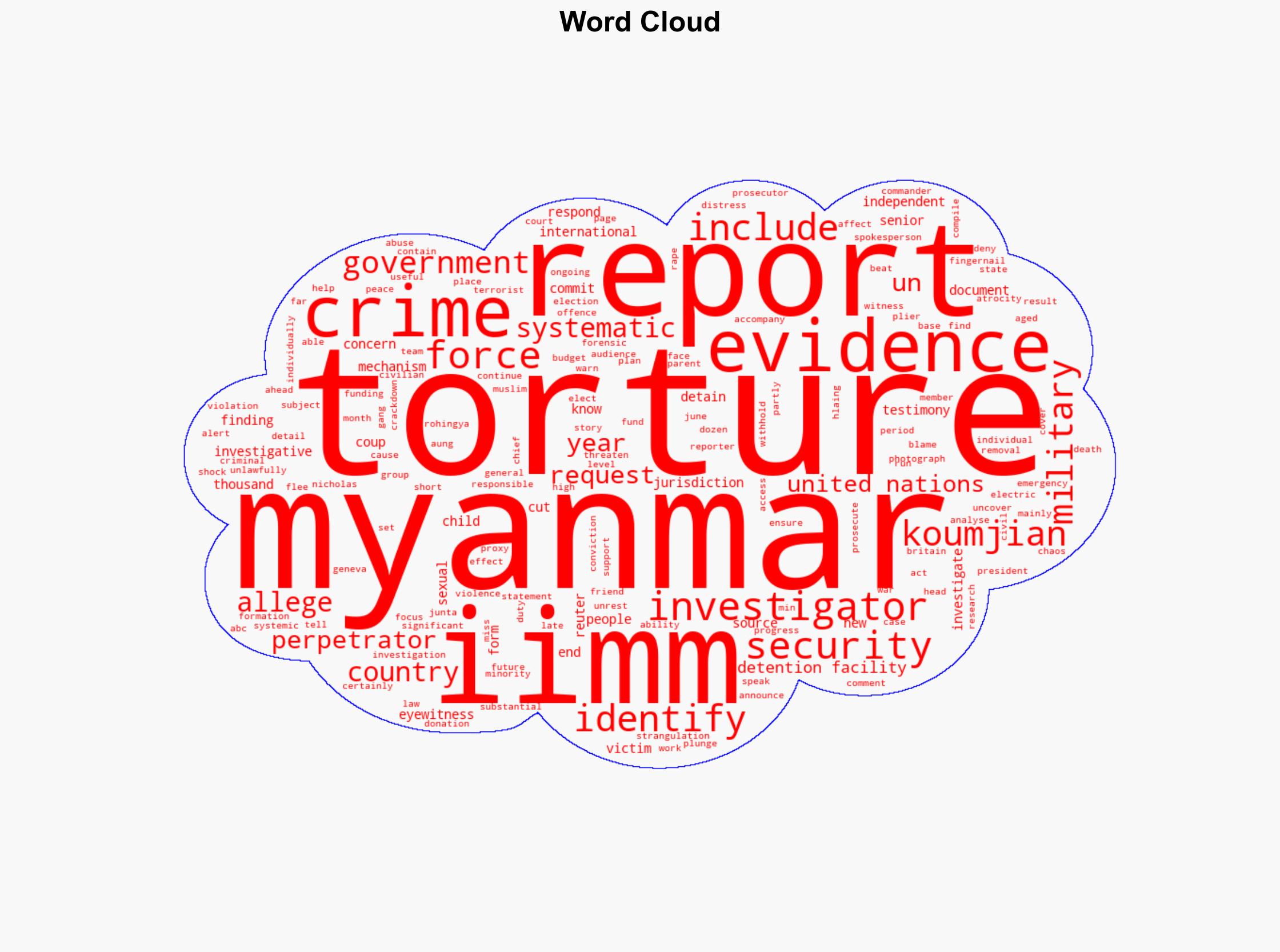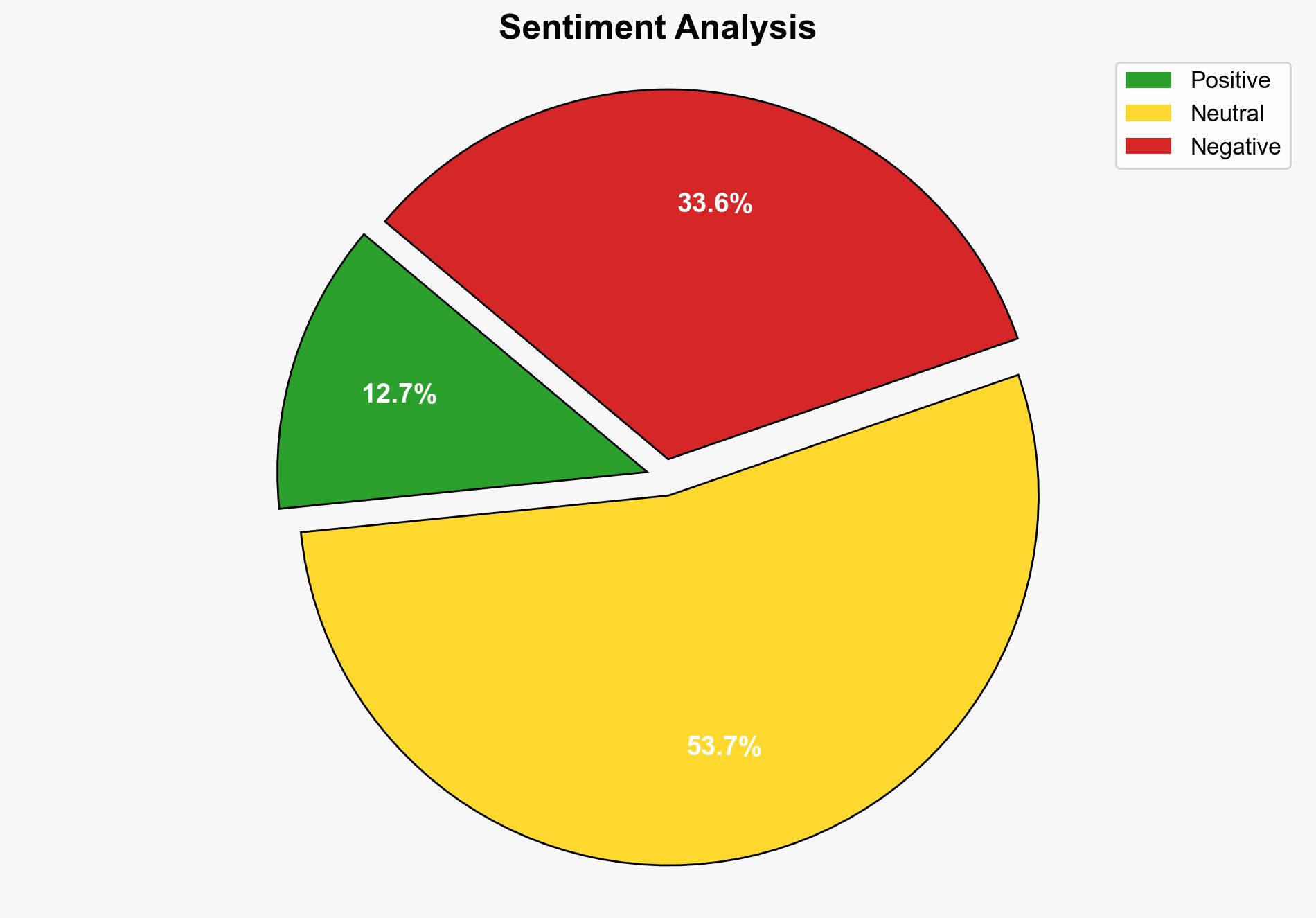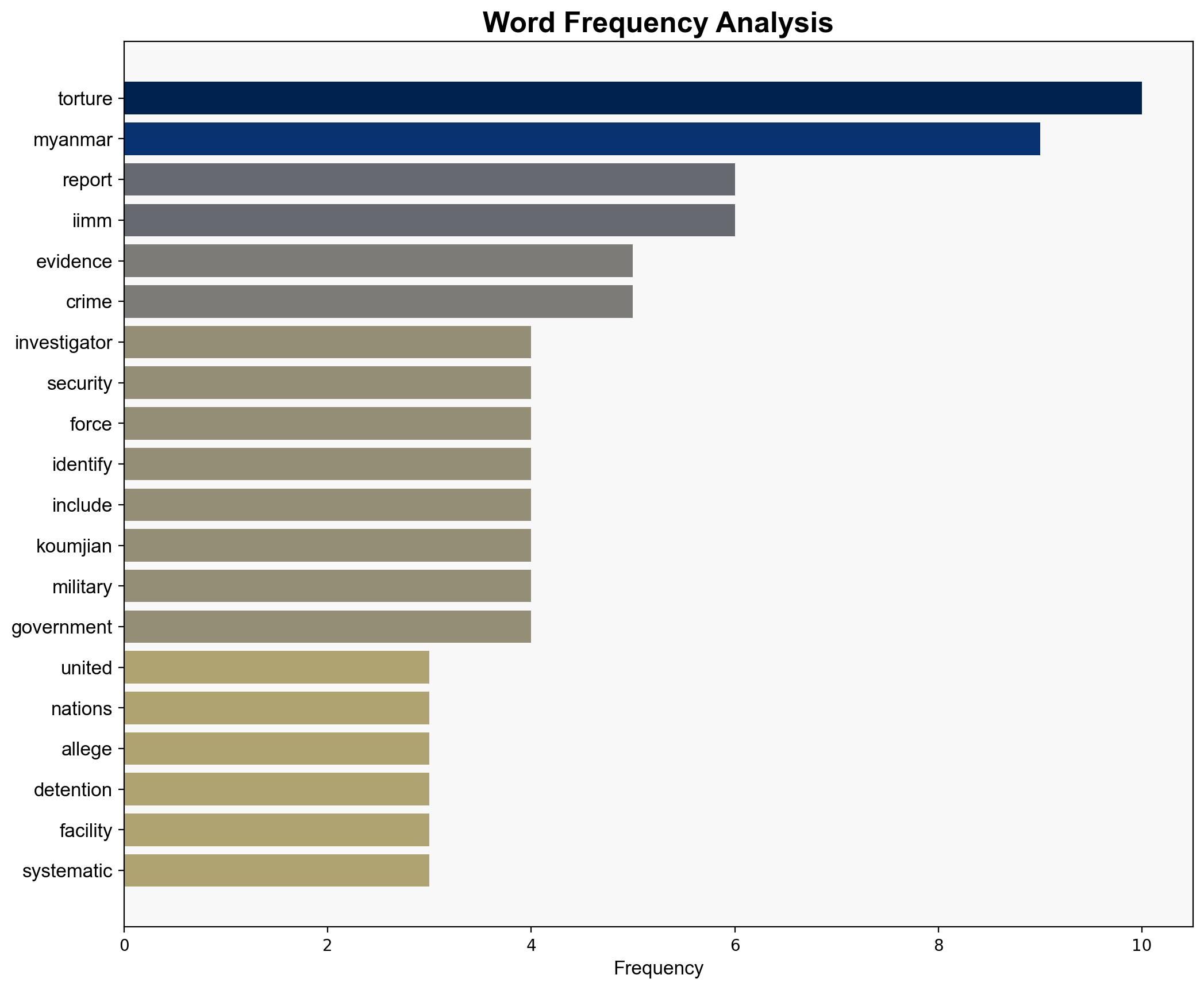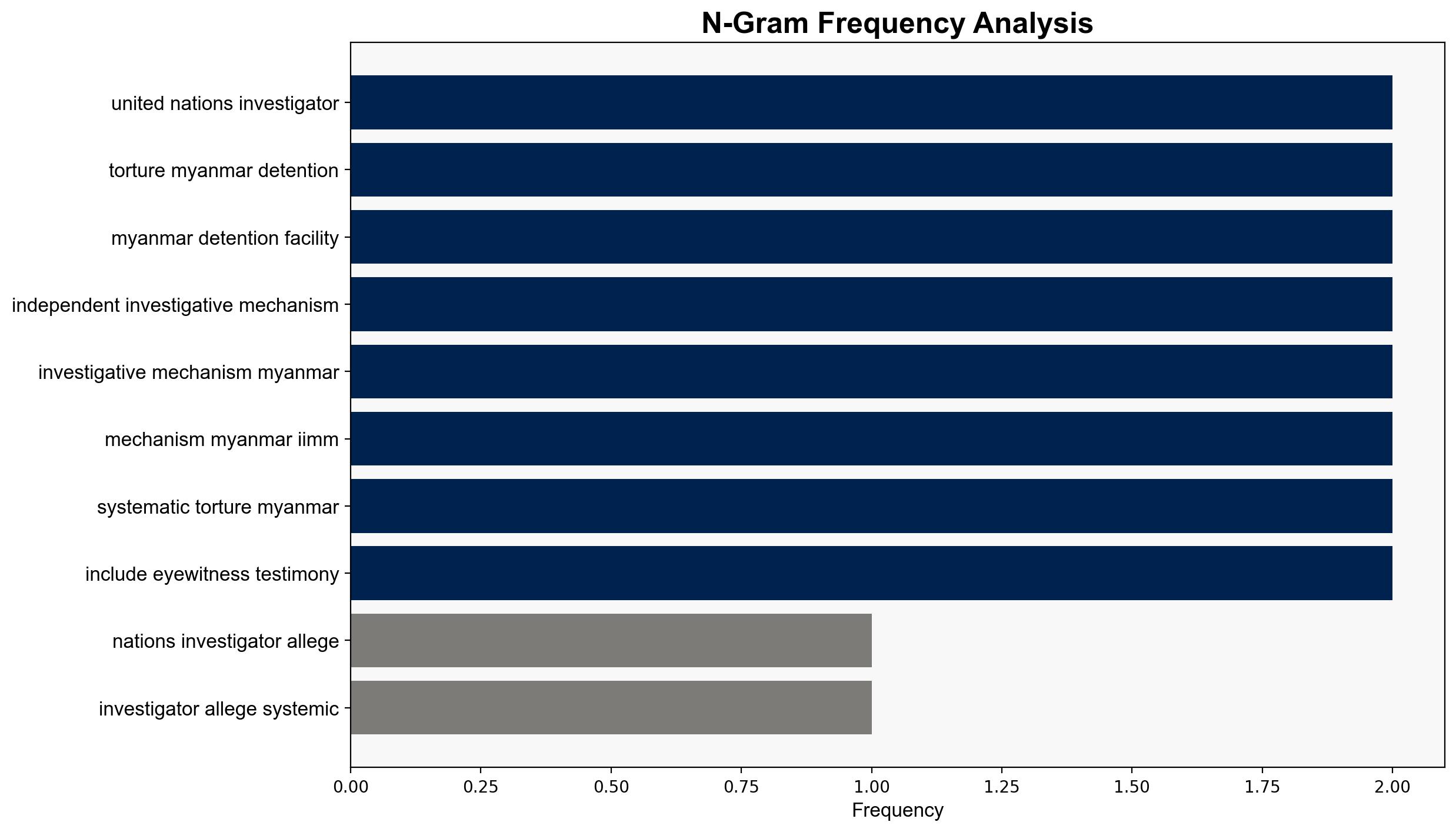UN-backed investigator alleges torture in Myanmar detention facilities – ABC News (AU)
Published on: 2025-08-12
Intelligence Report: UN-backed investigator alleges torture in Myanmar detention facilities – ABC News (AU)
1. BLUF (Bottom Line Up Front)
The most supported hypothesis is that Myanmar’s security forces are systematically engaging in torture within detention facilities, as evidenced by the UN-backed investigation. Confidence in this assessment is moderate, given the comprehensive evidence presented by the Independent Investigative Mechanism for Myanmar (IIMM). Recommended action includes international diplomatic pressure and support for continued investigations to ensure accountability and prevent further human rights violations.
2. Competing Hypotheses
Hypothesis 1: Myanmar security forces are systematically torturing detainees in detention facilities. This is supported by eyewitness testimonies, forensic evidence, and the identification of high-level perpetrators by the IIMM.
Hypothesis 2: Allegations of systematic torture are exaggerated or misrepresented due to political motivations or misinformation. This hypothesis considers the Myanmar government’s denial and lack of cooperation with international investigations.
Using the Analysis of Competing Hypotheses (ACH) 2.0, Hypothesis 1 is better supported due to the weight of evidence, including detailed eyewitness accounts and forensic documentation, which outweighs the lack of response from the Myanmar government.
3. Key Assumptions and Red Flags
– Assumption: The IIMM’s evidence collection methods are reliable and unbiased.
– Red Flag: The Myanmar government’s consistent denial and refusal to grant access to investigators may indicate an attempt to conceal activities.
– Blind Spot: Potential bias in eyewitness testimonies due to fear or coercion, though this is mitigated by the corroboration of multiple sources.
4. Implications and Strategic Risks
– Continued human rights abuses could lead to increased international sanctions, impacting Myanmar’s economy and diplomatic relations.
– Escalation of internal conflict if abuses fuel further resistance against the military government.
– Potential for regional instability if the situation leads to increased refugee flows or cross-border tensions.
5. Recommendations and Outlook
- Encourage international bodies to maintain pressure on Myanmar for transparency and accountability.
- Support NGOs and international organizations in documenting human rights abuses to ensure evidence is preserved for future prosecutions.
- Scenario Projections:
- Best Case: Myanmar cooperates with international investigations, leading to reforms and reduced human rights abuses.
- Worst Case: Increased repression and human rights violations, leading to international isolation and regional instability.
- Most Likely: Continued denial by Myanmar, with ongoing international pressure and limited internal reforms.
6. Key Individuals and Entities
– Nicholas Koumjian, head of the IIMM.
– Senior General Min Aung Hlaing, junta chief.
7. Thematic Tags
national security threats, human rights violations, regional focus, international law, geopolitical instability





